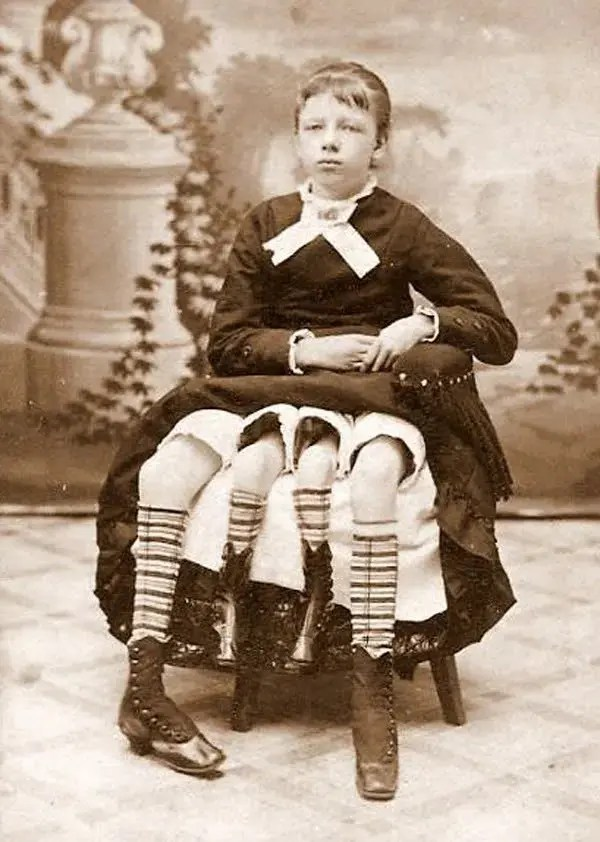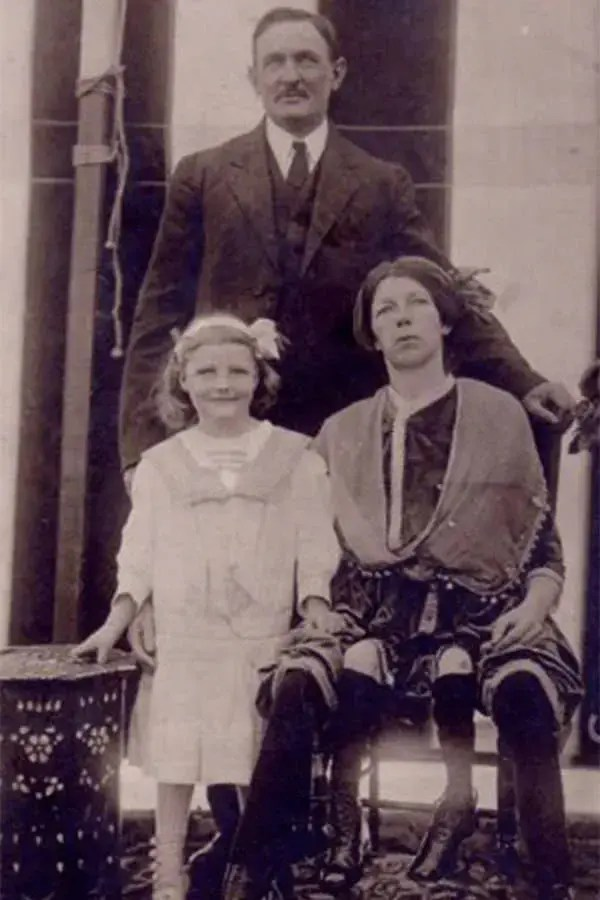The Extraordinary Life of Josephine Myrtle Corbin: The Four-Legged Woman Who Defied the Odds

Do you know the remarkable story of Josephine Myrtle Corbin? Born on May 12, 1868, in Tennessee, USA, Josephine entered the world with a rare congenital condition called dipygus syndrome, which caused her to have four legs. Despite the challenges her unique condition posed, Josephine lived an extraordinary life, one that continues to fascinate both medical professionals and the public today.
Medical Marvel: Understanding Dipygus Syndrome
Josephine Myrtle Corbin’s condition was the result of an incomplete developmental split in her body axis during fetal development. This caused her to have:

- Two pelvic bones
- Four legs (two fully functional and two smaller, underdeveloped middle legs)
- Two sets of reproductive organs
- Two anuses
Though her middle legs were movable, they were shorter and had only three toes each, rendering them unsuitable for walking. To accommodate her body’s structure, Josephine used her outer legs for mobility and wore custom-tailored clothing. Her case became a subject of medical interest and amazement, given her unique anatomy.
From Curiosity to Celebrity
At the young age of 13, Josephine’s life took a dramatic turn when she became a sideshow attraction under the title “The Four-Legged Girl from Texas.” Her father recognized the public’s fascination with her rare condition and began promoting her, describing Josephine as a “gentle personality like summer sunlight.” Her positive demeanor and cheerful attitude only increased the public’s intrigue.

A Lucrative Career in the Circus
Josephine’s time in the sideshow world brought her financial success:
- She earned around $450 per week at the peak of her career, an impressive sum for the time.
- She spent four years performing with P.T. Barnum’s renowned circus, drawing large crowds wherever she went.
Josephine’s fame took her across many cities, where she amazed audiences with her resilience and unique appearance.
Love, Marriage, and Motherhood
At the age of 19, Josephine married Dr. Clinton Bicknell and stepped away from her circus career to focus on her family. Despite medical concerns about her ability to bear children, Josephine led a relatively normal life:

- She gave birth to five children, a fact that astonished many in the medical community.
- Though she occasionally returned to performing to supplement her family’s income, she spent most of her years living peacefully in Texas with her husband and children.
Legacy and Final Years
Josephine Myrtle Corbin passed away in 1928 due to a streptococcal skin infection. Her story, however, lives on as a symbol of human resilience and adaptability:
- She is buried in Cleburne Memorial Park Cemetery in Texas.
- Her case continues to be studied in medical journals, as her rare condition remains a subject of curiosity and discussion.
Josephine’s life story serves as a testament to the fact that even those born with extraordinary conditions can lead full and meaningful lives, finding love, success, and happiness.

Lessons From Josephine Myrtle Corbin’s Life
Josephine Myrtle Corbin’s life offers several important lessons:
- Resilience in Adversity: Despite the physical challenges she faced, Josephine overcame the odds and built a successful career and family life.
- Embracing Uniqueness: Her story highlights the value of celebrating our differences, as they can lead to incredible opportunities.
- Love Knows No Boundaries: Josephine’s marriage and family life demonstrate that relationships can thrive despite physical conditions or societal expectations.
- Inspiring Others: Josephine lived boldly and authentically, inspiring people to embrace their uniqueness and defy societal norms.
- The Value of Compassion: Her story reminds us that understanding and accepting those who are different can broaden our perspectives and enrich our lives.

Final Thoughts
Josephine Myrtle Corbin’s extraordinary life proves that even in the face of rare and challenging conditions, individuals can lead rich, fulfilling lives. Her legacy serves as a powerful reminder of the strength of the human spirit and the importance of compassion, adaptability, and courage.
By embracing her uniqueness, Josephine paved the way for greater understanding and acceptance of differences, leaving behind a legacy that continues to inspire.
Keywords: Josephine Myrtle Corbin, four-legged woman, dipygus syndrome, medical marvel, P.T. Barnum circus, resilience, inspirational life stories, rare medical conditions, human spirit, unusual life stories.

Source from >> https://lindi.info/the-incredible-story-of-josephine-myrtle-corbin-the-four-legged-woman-who-defied-the-odds-video/




